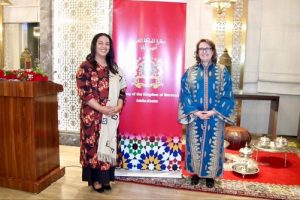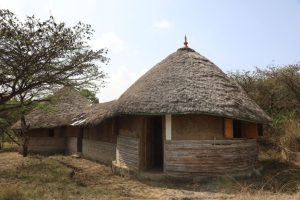BY MULUGETA GUDETA
The one hundred anniversary of Ethiopian theatre was marked last week at the Sheraton Hotel here in Addis Ababa. It was a moment to celebrate judging by the great number of friends of Ethiopian theatre who came to the venue. There was a great deal of haggle and misunderstanding between the organizers and the invited guests, according to official media reports.
It all started at the gate of the celebrated hotel, where uninvited guests were reportedly trying to enter the premises to attend the occasion while the organizers had limited the number of the guests. Large gatherings are prohibited under the protocols for combating the pandemic.
According to the chief organizer of the ceremony, too many uninvited media and other people had come and that created a kind of temporary chaos at entrance. The ceremony started later than programmed until the misunderstandings were cleared and the right guests were let in.
Some commentators attributed the wrangling at the entrance a sign that too many people had missed going to the theatre that was in good shape before the pandemic set in. Others added by saying that the centenary of Ethiopian theatre was such an important landmark that should not be missed by anyone with strong emotional attachment to theatre. Still others pointed at the nostalgia that was evident among the theatergoers who missed the stage after a yearlong closure of the halls.
All this demonstrated that Ethiopian theatre is still going strong despite the hurdles and as it is celebrating the one hundred anniversary of its birth. One hundred years is not a very long time for a country like Ethiopia that is proud of written literature dating back to thousands of years. Judging from the enthusiasm and popularity it is still enjoying, it would perhaps be more realistic to say that Ethiopian theatre is only one hundred years young.
According to an article written by Zerihun Birhanu in 2019 and published under the title, “Ethiopian Theatre: A Brief History”, Ethiopian author Teklehawariat Tekelmariam wrote the first play entitled, “Fabula: Yeaurewoch Commedia (Fable: The Comedy of Animals) and staged it at the Terrace Hotel in the capital Addis Ababa in 1921. Quoting a study by Abneh Ashagre and entitled “The Role of Women on the Ethiopian Stage”, Zerihun went on to say that the play was not a good success.
On the other hand, Jane Plastow, a professor at the University of Leeds, in her essay entitled, “The First African play: Fabula: Yawreoch Commedia and its Influence on the development of theatre in Ethiopia” says that Fabula is probably the first original African ever written and produced. ..contrary to some previous speculation, the original publication of the 1912 Fabula was not a play script rather it was a collection of eight animal fables written by Tekel Hawariat and designed as moral teaching for the young emperor Lij Iyassu.
Due to its satirical nature on the then monarchy and its comment on the corruption and backwardness of the country, Empress Zewditu immediately ordered to ban the performance and confiscate published copies of the play.
Prior to writing this play the author had travelled to Europe and to Russia in particular where he observed or learned the techniques of the modern theatre and returned to use it in writing and staging his play.
According to some critics, this was a turning point for the development of Ethiopian drama which was influenced from the beginning by its European counterpart. Other critics maintain that this, in turn, prevented the emergence of a truly Ethiopian way of writing and stage plays. It was then that the influence of European theatre started to influence Ethiopian theatre production and continued down to our day.
Zerihun in his above-quoted study says that after Teklehawariat’s play, many playwrights in the 1030’s continued to journey to write Ethiopian stories in in European form of play righting. He mentioned Yogtahe Negussie and Melaku Begossew who wrote plays in the 1930’s along the same lines and were popular among students at schools in Addis Ababa where, at the end of each academic year, students staged plays whose messages focused on student life and gave lessons both to youngsters and their parents.
The establishment of the Hager Fikir Theatre was a milestone in the development of modern theatre in Ethiopia. According to available information, the Hager Fikir Theatre was established by an old dignitary by the name Mekonnen Endalkachew to motivate patriots and the general public during the Italian fascist invasion and war of 1933-36.
Ethiopian theatre at that time played a highly progressive and patriotic role in agitating the public and building a strong anti-fascist sentiment during the resistance. As the author of the above-quoted study tells us, “Mekonnen Endalkachew promoted the use of music and sketch plays to attract the audience for his motivational speeches every Sunday. The plays were improvised based on the main issue every Sundays’ gatherings.”
Ethiopian theatre thus served as a potent weapon against fascist propaganda and repression by encouraging patriots and the general public to rally around the leaders of the resistance movement. The fascists did everything possible to stop any form of resistance propaganda by burning books and prohibiting the staging of plays. After the end of the war of resistance, Ethiopian theatre resumed its development along the lines established by the pioneers.
Although Ethiopian theatre has turned hundred this year, the establishment of a modern theatre house dates back to 1956. According to available information, in 1956 the Ethiopian National Theatre was built and inaugurated in the presence of Emperor Haile Sellassie. The Municipality Theatre was built under the building of the Addis Ababa Mayor’s office and started to show performances written and directed by Ethiopian playwrights and directors.
According to another information from the Ministry of Youth Sports and Culture, the hall had begun to be built during the Italian occupation as Cinema Marconi with some 350 seats. The building was later completed in 1956 for the celebration of the Silver Jubilee, and expanded its seats to 1260 people.
The theatre group was founded by the government in the late 1940s, with the main objective playing Ethiopian songs by soloists accompanied by modern orchestra. The Austrian composer Franz Zelwecker became the first director of the National Theatre.
The Municipality Theatre was later on built under the building of the Addis Ababa Mayor’s Office and started to show performances written and directed by Ethiopian playwrights and directors.
Throughout the 1940s and 1950s, Ethiopian playwrights continued to produce more dramatic works and contributed to the development of Ethiopian theatre. The main figures of this period were Yoftahe Negussie, Melaku Begosew and Eyoel Yohannes. In the late 1950s and early 1960s young playwrights made their appearance a the theatre houses and wrote or produced plays that were very popular among the residents of the Ethiopian capital.
Among these new brands of playwrights, a few of them had exceptional talents that flourished later in the following decades. Tsegaye Gebre Medhin, Mengistu Lema, Tesfaye Gessesse, Abate Mekuria, Debebe Eshetu and Wegayehu Nigatu are often mentioned as the main figures of the emerging and popular crop of theatre personalities.
Another critical stage in the development of the theatrical arts in Ethiopia was the Ethiopian revolution. The revolution not only changed the social, political and economic structures of Ethiopian society. It also deeply affected the arts and literature. Theatrical arts were not an exception.
The revolution changed the theaters thematically, ideologically and formally. Thematically the post-revolution theatres leaned towards socialist realism themes whereby workers and peasants were features as the main characters of the dramas and class struggle was brought on to the stage as the engine of change.
In this period, Ethiopian theatre shifted from criticism of the aristocratic order under Emperor Haile Sellassie to the feudal and the rich urban classes and all those who opposed the revolutionary changes. Tsegaye Gebre Medhin was the most prominent playwright of this period with his early works such as Hahu Besidist Wer (ABCD in Six Months) Melekte Wezader (Message of the Proletariat) and Bertolth Brecht’s translation of Mother Courage rendered in Amharic as Enat Alem Tenu.
A new feature of the revolutionary period was the creation of art and music groups in almost all the neighborhood organizations known as Kebele. The Kebele theatre and music groups were operated by political cadres and young people and their main objective was to raise the political consciousness of the urban population and prepare them for the class struggles ahead.
These groups were known as kinet (art) and helped produce famous musicians, singers and actors who attained popularity in the post revolution period. These young artists later on became famous in the arts and music environment long after the revolution lost its appeal and faded away particularly after the Red Terror period.
A negative fallout of this period was that theatre was fully controlled by the government and a strict regime of censorship was instituted so that themes and performances that did not favor the revolution were not only banned but also discouraged to be performed by artists. There were no amateur or independent theatre groups in the country.
The government was well aware of the huge impact theatrical arts had on the political process and it chose to put them under lock and key. So, this period was both revolutionary and counter-revolution in the sense that it both encouraged creativity as it discouraged independent thinking let alone dissent of any kind.
The downfall of the Derg government in 1991 had created an atmosphere of hope for a new kind of change that could encourage freedom of creativity but this was not the case. In place of socialist realistic art, a new brand of artistic philosophy came to replace it and it was later on known as developmental art or art for the service of the economic development of the country.
This was not however neither new idea nor different from the artistic objective of the previous Derg period in the sense that both aimed at economically developing society while both stifled independent creativity and discouraged criticism and dissent.
The EPRDF period of development in the theatrical arts was remarkable for discouraging mature and prominent personalities in the theatrical world from playing a leading role. They were replaced by amateur, ambitious, younger and more conformist playwrights, directors and actors who adhered to the official line of the ruling party whose philosophy was based on promoting ethnic awareness rather than developing theatre as a creative art dealing with universal human conditions.
This does not however mean that theatre in that period was totally irrelevant or retrogressive. In the midst of the chaos that had emerged following the EPRDF regime, there emerged capable and talented playwrights and actors who dealt with social themes and concerns. However most of them leaned towards producing comic plays with the sole intent of making the audience laugh by inventing farcical situations and characters.
According to many critics, that led to imitating the comic style to the point of degenerating into a travesty that undermined the dignity and majesty of Ethiopian theatre of the previous periods. However, there were also serious playwrights who courageously addressed serious political themes despite the strict censorship regime that was imposed by the EPRDF government and its cadres in the arts bureaucracy.
As Ethiopian theatre celebrates its one hundred’s anniversary this year, a once vibrant and admired art form is now struggling to reinvent itself or return to its period of glory. However the challenges are so great that the prospect in the short-term seems all the more gloomy.
Although the theatre is still loved and admired by the audience that missed it badly in this tragic times of the pandemic, the prospects of using it as a tool of change or a means of entertainment are far from evident. The new theatre has not yet taken visible shapes.
At present, there is no clear direction as to where the Ethiopian theatre is going nor a new policy regarding freedom of artistic creativity or the freedom and prospect for organizing independent theatre groups. However the general hope is that the Ethiopian theatre will one day rise to the occasion and reclaim its lost grandeur by producing new and talented artists as well as by expanding the space for freedom.
Ethiopian theatre is still a great art form with highly talented artists, producers and actors. It also enjoys great popularity among the theatergoers and is destined to attain its full potentials once the present challenges will be overcome sooner or later and theatre will once again reclaim its honorable and deserved place in national life, serving both economic development and the development of a better personality, spirit or mind among the new generation.
The Ethiopian Herald April 25/2021





